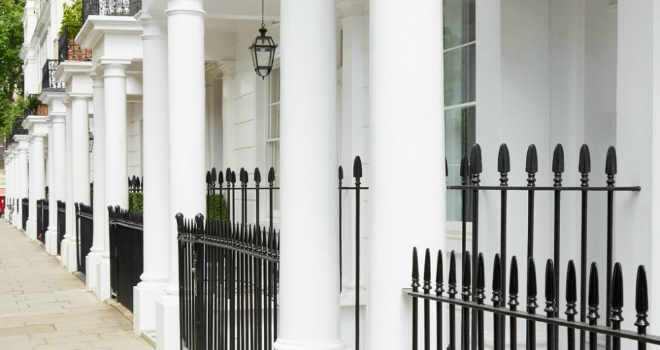
"Property owners at higher price points are more discretionary and when they look around at what’s been happening in the sales market, many have gone down the rental route"
- Tom Smith - Knight Frank
The prospect of a general election will bolster demand in the capital’s high-value lettings market this year.
The best way to describe the performance of the high-value London property market in recent years would be ‘reassuringly uneventful’.
Buyers and sellers in prime central London have lived through a global pandemic, a stamp duty holiday and the fact that five-year fixed-rate mortgages quadrupled in the two years to July 2023.
The result? In the three years to December, average prices grew 0.7%, reflecting how successive lockdowns and international travel restrictions took their toll. Over the same period, the Nationwide UK index increased by 12%.
However, relatively flat prices mean more owners have chosen to rent out their property rather than sell, which has driven up the number of so-called super-prime tenancies.
These are classified as tenancies above £5,000 per week in central and north London and higher than £15,000 per month in south-west London.
The number carried out by Knight Frank rose 10% to 108 in 2023 from 98 in 2022. The figure in 2021 was 81.
Tom Smith, head of super-prime lettings at Knight Frank, comments: “One of the key drivers has been higher supply.
“Property owners at higher price points are more discretionary and when they look around at what’s been happening in the sales market, many have gone down the rental route.”
How much more flexible are owners of prime or super-prime properties?
Well, the number of new listings above £1,000 per week in London increased by 30% in 2023 compared to the previous year, Knight Frank data shows. Below £1,000 per week, there was an equivalent rise of just 0.5%.
On the other side of the equation, uncertainty surrounding the general election will support demand this year, said Tom.
Should the Labour Party win power, they have pledged to overhaul the non-dom tax regime and increase the surcharge for overseas residential property buyers. Both represent risks for the prime central London sales market.
Prices in PCL are forecast to grow by 1% this year due to the climate of political uncertainty, which compares to a forecast of 3% across the UK. We expect stronger growth from 2025 in PCL, with a total increase of 18.1% forecast over the next five years.
Tom says: “Global ultra-high net worth individuals like the non-permanence of renting and super-prime lettings properties are often in direct competition with London’s luxury hotels for that reason.
“If they need to subsequently relocate, they won’t be worried about how property prices have performed or the fact they have forked out 17% in stamp duty, which can be the equivalent of four or five years’ rent. These tax changes have pushed up demand in recent years, which means landlords need to specify their property to the same high standard as they would if it was being sold.”
Landlords that follow this advice can expect to achieve higher investment yields, given the rarity factor at the very top of the market.
Tom adds: “Yields of 4.5% or more can be achieved in the best luxury developments that have similar amenities to five-star hotels. That compares to less than 3.5% across the wider market in Knightsbridge or Mayfair.”
In terms of the tenants themselves, after the UK (23% last year), the next-largest group are from the US (22%). “They often have a tech background and are moving to the UK with their families, attracted by the relatively weak pound and the fact politics in the US has become more divisive in recent years,” said Tom.
It’s probably no surprise that 78 out of the 108 deals last year took place in prime central London. The highest number was in Knightsbridge (33) followed by Belgravia (19) and Kensington (13).
There were also 13 super-prime tenancies in south-west London last year compared to 9 in 2022, Knight Frank data shows.
Tom concludes: “The super-prime lettings footprint is expanding beyond prime central London to areas like Fulham, Wimbledon Village, Barnes & Richmond. We also completed on two penthouses in Battersea Power Station.
“The deals in Battersea happened because there is now that kind of high-quality product on the market. The tenancies in south-west London had more to do with schooling and space.”
With relatively flat price growth this year in prime central London and a countdown to a general election that gets messier by the week, the upward trajectory in the super-prime lettings market looks set to continue.





